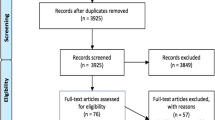Abstract
Purpose
To provide an overview of methodological considerations when conducting qualitative research with pediatric patients for the purpose of patient-reported outcome measure development
Methods
A literature review of qualitative methods in pediatric measure development was completed. Eight clinicians providing care to pediatric patients were interviewed for their expert input. Thematic analysis of the literature and clinician interviews was used to identify themes for consideration.
Results
Findings from the literature and expert interviews emphasized the way in which cognitive, linguistic, and social developmental factors affect pediatric patients’ understanding of their condition and ability to communicate about their experiences in an interview. There was consensus among the experts that traditional semi-structured interviews with children younger than eight lack characteristics necessary to yield meaningful information about condition and symptom report because they may fail to capture children’s understanding and awareness of their condition and may limit their ability to express themselves comfortably. Our findings include recommended strategies to optimize data collected in qualitative interviews with pediatric patients, including modifications to the interview process to establish rapport, construction of interview questions to ensure they are developmentally appropriate, and the use of supplementary techniques to facilitate communication.
Conclusion
When employing qualitative methods in pediatric measure development, interview guides, methods, and length require careful tailoring to ensure the child’s perspectives are captured. This may be best achieved through research performed with narrow age bands that employs flexibility in methods to allow children a comfortable way in which to communicate about their experiences.
Similar content being viewed by others
References
Faux, S. A., Walsh, M., & Deatrick, J. A. (1988). Intensive interviewing with children and adolescents. Western Journal of Nursing Research, 10(2), 180–194.
Docherty, S., & Sandelowski, M. (1999). Interviewing children. Research in Nursing & Health, 22(2), 177–185.
Curtin, C. (2001). Eliciting children’s voices in qualitative research. American Journal of Occupational Therapy, 55(3), 295–302.
Arbuckle, R., & Abetz-Webb, L. (2013). “Not just little adults”: Qualitative methods to support the development of pediatric patient-reported outcomes. The Patient, 6(3), 143–159.
US Department of Health and Human services FaDA, Center for Drug Evaluation and Research, Center for Biologics Evaluation and Research, Center for Devices and Radiological Healthy. Guidance for Industry-Patient-Reported Outcome Measures: Use in Medical Product Development to support Labeling Claims. 2009; http://www.fda.gov/downloads/Drugs/GuidanceComplianceRegulatoryInformation/Guidances/UCM193282.pdf
Kortesluoma, R. L., Hentinen, M., & Nikkonen, M. (2003). Conducting a qualitative child interview: Methodological considerations. Journal of Advanced Nursing, 42(5), 434–441.
Fivush, R. (1993). Developmental perspectives on autobiographical recall. In G. S. Goodman & B. L. Bottoms (Eds.), Child victims, child witnesses: Understanding and improving testimony (pp. 1–24). New York: Guilford Press.
Gill, P., Stewart, K., Treasure, E., & Chadwick, B. (2008). Conducting qualitative interviews with school children in dental research. British Dental Journal, 204(7), 371–374.
Steward, M. S., & Steward, D. S. (1996). Interviewing young children about body touch and handling. Monographs of the Society for Research in Child Development, 61(4–5), 1–214.
Zwiers, M. L., & Morrissette, P. J. (1999). Effective interviewing of children: A comprehensive guide for counselors and human service workers. Philadelphia: Taylor and Francis.
Willis, G. B. (2005). Cognitive interviewing: A tool for improving questionnaire design. Thousand Oaks, CA: Sage.
Woolley, M. E., Bowen, G. L., & Bowen, N. K. (2004). Cognitive pretesting and the developmental validity of child self-report instruments: Theory and applications. Research on Social Work Practice, 14(3), 191–200.
Irwin, D. E., Varni, J. W., Yeatts, K., & DeWalt, D. A. (2009). Cognitive interviewing methodology in the development of a pediatric item bank: A patient reported outcomes measurement information system (PROMIS) study. Health and Quality of Life Outcomes, 7, 3.
Matza, L. S., Swensen, A. R., Flood, E. M., Secnik, K., & Leidy, N. K. (2004). Assessment of health-related quality of life in children: A review of conceptual, methodological, and regulatory issues. Value in Health, 7(1), 79–92.
Acknowledgments
This work was funded by the Neurofibromatosis Treatment Acceleration Foundation.
Funding
This project was supported by the Neurofibromatosis Therapeutic Acceleration Program (NTAP).
Author information
Authors and Affiliations
Corresponding author
Ethics declarations
Conflict of interest
All authors do not have potential conflict of interests to be disclosed.
Rights and permissions
About this article
Cite this article
Patel, Z.S., Jensen, S.E. & Lai, JS. Considerations for conducting qualitative research with pediatric patients for the purpose of PRO development. Qual Life Res 25, 2193–2199 (2016). https://doi.org/10.1007/s11136-016-1256-z
Accepted:
Published:
Issue Date:
DOI: https://doi.org/10.1007/s11136-016-1256-z




